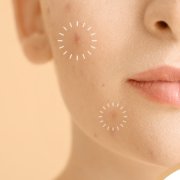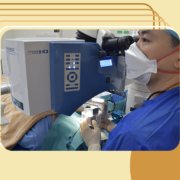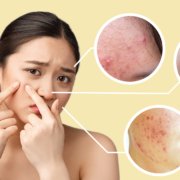Ways To Get Rid Of Acne Scars
Acne is most people’s nightmare, especially if it continues to worsen with every breakout.
Have you suffered through a severe case of acne that left behind unsightly scars? Long after pimples clear up and the redness and irritation are gone, some of us carry such unwanted reminders.
Whether scars are raised or sunken, there are several good ways to mask or minimize them.
How to get rid of your acne scars
Acne is a common skin condition affecting about 80% of those between the ages of 11 and 30 at some point. It can be on your face, chest, back and shoulders. It may seem like the irritation will never go away, but it does. When it goes away, then you can deal with any remaining scars.
Your first line of defense is to consult a dermatologist. They will first focus on getting your acne under control. The fewer breakouts you have, the fewer scars you’ll get. The good news is that not all acne scars are permanent.
When your doctor turns attention to the scars your acne has left behind, they will typically explore three main treatment options:
1. Laser treatments
Vascular-specific lasers target blood vessels and can help lighten flat or raised scars that are pink or purple and help flatten raised scars. Doctors often use fractional or carbon dioxide ablative lasers to treat acne scars.
Laser treatments aren’t just for acne. Doctors use lasers to treat other types of scarring as well — including those from burns, skin cancer and tattoo removal.
2. Chemical peels
Your dermatologist may apply a chemical solution to the skin. This causes it to blister and eventually peel off, creating new, regenerated skin that’s usually smoother than the old skin.
Peeling usually causes redness, and sometimes swelling and cold sores, for up to seven days. This treatment also is less expensive because you typically will need only one treatment session.
3. Microneedling
Also known as collagen induction therapy, microneedling uses either a fine-needle roller or pen device to create tiny holes in the top layer of the skin. The procedure stimulates collagen production, which helps improve fine lines and skin texture.
Redness occurs afterward and typically last a couple of days. Most people will need four to six microneedling treatments for the best results.
The doctor may use more than one type of treatment, depending on your needs.
It’s never too late to treat those scars
Although it’s not possible to get rid of your acne scars quickly, it’s never too late to treat them. Teenage patients may have to wait until their early 20s before undergoing treatment to make sure there’s little risk of future acne flare-ups.
While there’s no real way to get rid of acne scars naturally and at home, there are a few things you can do to reduce your risk of getting acne scars:
- Quit smoking or don’t start smoking.
- Keep your hands off of your face. Resist the urge to pick or squeeze your pimples.
- Treat your acne as soon as possible to reduce the chance of scars.
Scarring can happen at any age, no matter if you’re a teenager and your hormones are changing or you’re an adult. Sometimes when adults lose weight or lose elasticity in their skin as they age, scarring from years past becomes more evident.
Getting rid of acne scars starts with the right treatment. We have the best acne treatment program at Shinagawa Aesthetics.
Schedule a consultation with our skin experts to solve your acne problems! Call our Patient Care Lines: (+632) 7-368 5238 l (+63) 917 862 7454 l (+63) 921 217 0517 for inquiries, questions, and appointments or talk to our consultants via LiveChat here on our website.





